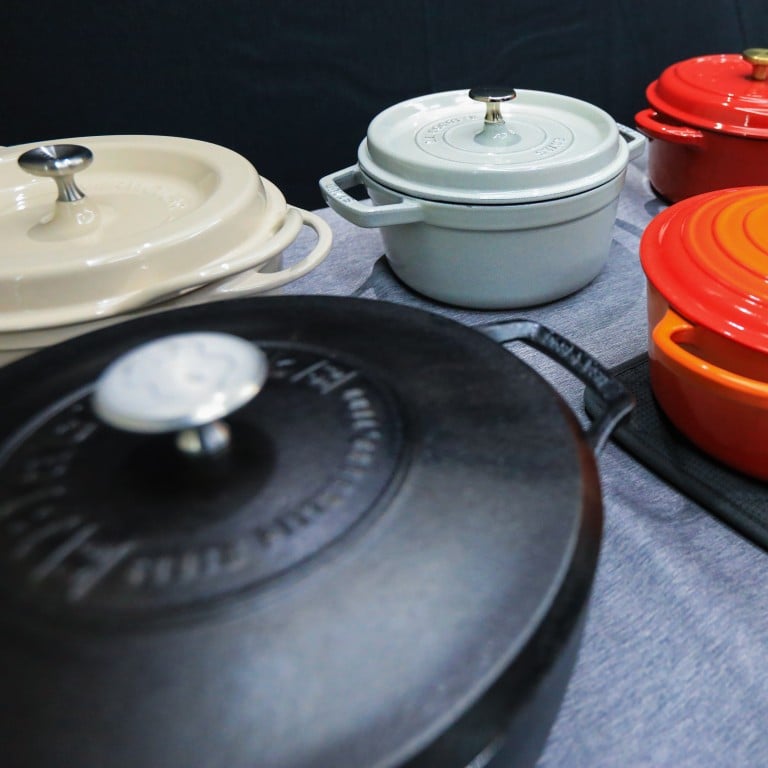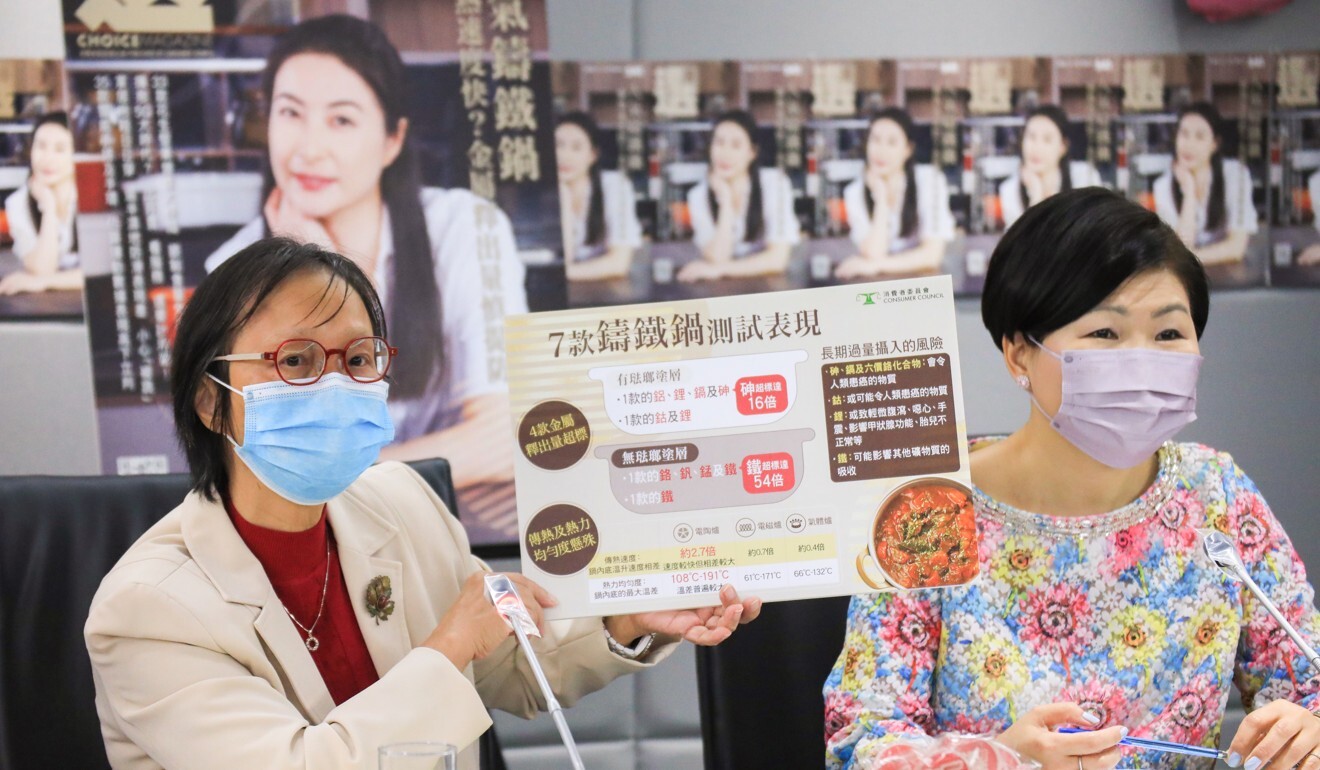
Hong Kong watchdog finds over half of cast iron cooking pots release metals exceeding global safety standards
- Centre for Food Safety says the laboratory tests do not necessarily reflect the results from cooking in normal circumstances
- Best performers were pots from popular brands Lagostina, Le Creuset and Staub, while products from Lodge and Bruno fared the worst
More than half of cast iron cooking pots recently tested by Hong Kong’s consumer watchdog were found to have released various metals exceeding global safety standards, with one possibly containing carcinogenic substances.
The Consumer Council on Monday revealed that four of seven models of cast iron pots tested released metals such as cobalt, lithium, aluminium, arsenic, cadmium, iron, chromium, manganese or vanadium that exceeded global standards.
The limits are set by bodies such as the Council of Europe, a human rights group, as well as France’s General Directorate for Competition Policy, Consumer Affairs and Fraud Control.
The seven models were from France’s Le Creuset and Staub, Lagostina and Bruno of China, Vermicular and Sori Yanagi of Japan, and Lodge of the United States. They cost from HK$798 (US$102) to HK$3,199.
The best performers were Lagostina, Le Creuset and Staub, while Lodge and Bruno fared the worst.
Nora Tam Fung-yee, chairwoman of the Consumer Council’s research and testing committee, said the metals could accumulate inside the body and pose health hazards.
“Excessive intake [of lithium] could cause mild diarrhoea, nausea, hand tremors and so on, and may [affect] thyroid functions or abnormal foetal development,” she said.
To test the amount of metals released from enamel-coated articles when they come into contact with food, the council added acidic food simulants in five models of pots from Lagostina, Le Creuset, Staub, Vermicular and Bruno, and placed them in an environment of 95 degrees Celsius (203 degrees Fahrenheit) for two hours.
It found that the metals released by Vermicular and Bruno pots exceeded the upper limit of the global standards.

The amount of metals such as arsenic, cadmium and lithium released by a HK$798 Bruno iron pot exceeded the international mark by 0.4 times to 16 times.
For example, the tests found 34 micrograms per litre of arsenic, which was 16 times higher than the maximum level of 2 micrograms per litre allowed by the global ISO 4531 standard.
These metals were classified by the International Agency for Research on Cancer as carcinogenic to humans, the council said.
The tests also found a HK$2,580 Vermicular iron pot had levels of cobalt and lithium above the limit by about 0.6 times and 1.3 times, respectively, with cobalt categorised as possibly carcinogenic to humans.
Tam said the tests showed the models could release metals when used to cook acidic food such as ginger and vinegar stew.
“You have to be careful when cooking acidic food. When cooking other kinds of food, it might not release that many metals. But we have to be mindful that we have other choices … There are other pots that do not release metals,” she said, adding that consumers should also stop using pots with cracks in the enamel coating.
The Centre for Food Safety said the laboratory tests did not necessarily reflect the results from cooking in normal circumstances.
Bruno said it had doubts about the results, but as a precaution to allay consumers’ anxiety, it had removed from shelves pots of the model used in the tests.
The company said its products met ISO 4531 and US standards after it engaged an independent laboratory for testing.
Vermicular said its products met standards in Japan and the US through tests in independent laboratories.
Two other models without enamel coating were tested, but were found with higher than normal metal levels.
The HK$1,788 Lodge iron pot was found with chromium, iron, manganese and vanadium levels exceeding Council of Europe standards by 0.7 times to 54 times.
The Lodge pot was found to have 2,200 micrograms per kilogram of iron, 54 times higher than the 40 micrograms per kilogram allowed by the European body.
The manufacturer of Lodge products said iron was a key mineral needed for human beings, which explained why the Council of Europe fixed its standards on the principle of keeping it to a reasonable level. It also said manganese was among the least poisonous metals and had not seen any food-related reports of excessive intake.
The HK$1,950 Sori Yanagi pot was found to have iron levels above the same standards by about 1.4 times. Its distributor said as the product was made of cast iron and did not have an enamel layer, it was normal for more iron to be released during cooking.


